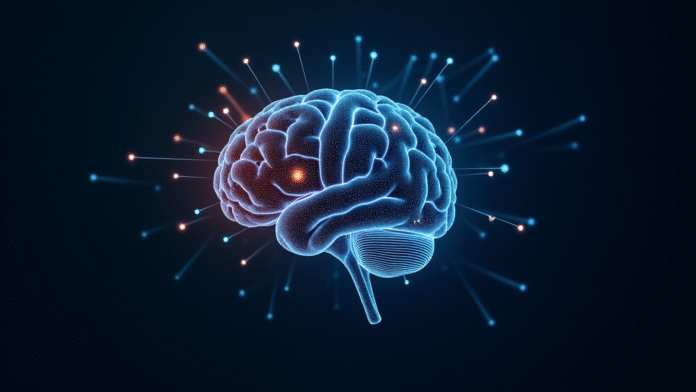Computational intelligence is reshaping how we understand cognition and computation, bridging brains and machines. Building on insights from computational neuroscience, researchers explore how prediction and pattern recognition drive both human and artificial systems. The idea of collective intelligence shows that smarter outcomes emerge when individuals coordinate and share information. A key thread ties the evolution of intelligence to symbiogenesis, revealing that cooperation often fuels complexity. These perspectives also illuminate AI and human cooperation as mutually reinforcing rather than strictly separate domains.
Viewed through alternative terms, cognitive computing and machine intelligence offer a parallel lens on how systems learn, adapt, and collaborate. LSI-style framing connects ideas like distributed cognition, social computation, and the evolution of intelligence, showing how cooperative dynamics underlie smart behavior. From this broader lens, neuroscience-inspired AI and bio-inspired computation reveal shared mechanisms across brains and machines. In short, the topic unfolds as a network of ideas where human expertise and algorithmic power strengthen one another.
The Symbiotic Engine of Evolutionary Intelligence
Symbiogenesis—the merging of distinct organisms into more capable, cooperative wholes—emerges in Agüera y Arcas’s framing as a primary driver of evolution. This view expands the traditional focus on random mutation, highlighting how cooperation and integration create new functional capacities that outpace isolated change. The assertion that “Life was computational from the start” frames biology itself as a series of joined computations that grow more complex through collaboration.
In this lens, evolution of intelligence is not just about sharpening individual brains but about building networks that process information collectively. The parallel between biological symbiotic merging and the way AI systems gain capability through interconnected modules and data-sharing illustrates a shared logic: cooperation yields more powerful computation and richer predictive models. This perspective ties together concepts from computational neuroscience with evolutionary theory to explain how complexity arises from coordinated action.
Computational Intelligence: Brain Power and Machine Power Converge
Agüera y Arcas treats brains as explicit computational engines, processing inputs and producing outputs through continual prediction. This view is reinforced by computational neuroscience, which maps how neural circuits transform signals into anticipations of the future. The convergence with AI lies in the brain’s emphasis on prediction, not merely calculation, a parallel that helps explain why AI models increasingly emulate neural processing patterns.
As brains and machines share a reliance on prediction, questions about intelligence shift from “are machines like minds?” to “how do shared computational principles enable smarter hybrids?” The discussion places the evolution of intelligence within a spectrum that includes human cognition, machine learning, and their joint potential, underscoring the role of parallel computation and data-driven refinement in both natural and artificial systems.
From Individual Minds to Collective Intelligence
One of the core themes is that human intellect expands most when individuals band together in societies. Aggregated skills, specialized roles, and shared models of the world produce outcomes that no single brain could achieve alone. The article cites the emergence of complex feats—like organ transplants or spaceflight—as showcases of a collective human intelligence at work.
This collective intelligence is not merely a social phenomenon but a computational one: cooperation enables more sophisticated predictions, simulations, and problem-solving. By modeling each other and coordinating actions, groups generate capabilities that surpass the sum of their parts, a dynamic echoed in networked AI systems that improve through collaboration and information exchange.
Symbiogenesis as a Driver of Complexity
Margulis’ theory of symbiogenesis is invoked to explain why life becomes increasingly complex when separate organisms merge and cooperate. In Agüera y Arcas’s account, this principle applies to both biology and intelligence, where partnerships yield new computational wholes with emergent properties. The idea reframes evolution as a process driven by integration as much as by competition.
The same logic now informs AI development, where disparate models, data streams, and agents form cooperative networks that exhibit greater versatility and resilience. As components join and cooperate, systems reach levels of parallel processing and adaptability that resemble the developmental leaps seen in living genomes.
The Role of Cooperation in the Evolution of Intelligence
A central argument is that cooperation catalyzed the human brain’s expansion and the emergence of a “collective intelligence.” Societal living allowed not just shared knowledge but shared problem-solving capabilities that individual cognition could not achieve. This historic transition underscores that intelligence evolves through social collaboration as much as through individual insight.
In modern contexts, cooperation extends to how AI systems and humans interact. The trajectory described suggests a future in which AI augments human capacities, fostering AI and human cooperation that amplifies problem-solving, decision-making, and innovation. The notion of collective action driven by theory of mind and group modeling remains a recurring theme in this evolution.
Computational Neuroscience: The Biology Behind Prediction
Computational neuroscience provides the bridge between brain biology and information processing. Brains are described as predictive engines that continuously transform inputs into actionable forecasts, a view that aligns with how AI models operate. This biological grounding helps explain why prediction is central to intelligence, both natural and artificial.
By framing neural activity as computation, researchers can model learning as refining predictive accuracy across diverse contexts. This approach illuminates how evolution shaped neural architectures that excel at pattern recognition, anticipation, and flexible behavior—core capabilities that AI aims to replicate through sophisticated optimization and learning algorithms.
AI and Human Cooperation: A Shared Trajectory
The article positions AI development along a shared arc with human cooperation, where each advances the other through collaboration, feedback, and shared goals. This trajectory suggests that AI’s power grows most meaningfully when integrated with human networks, cultures, and institutions that organize and channel intelligence at scale. The phrase “AI and human cooperation” captures this symbiosis as a central driver of progress.
In this framework, technology policy, ethics, and governance matter as much as algorithms themselves. Effective AI deployment hinges on aligning machine capabilities with human values, enabling collective problem-solving while preserving agency, fairness, and accountability within cooperative ecosystems.
Evolution of Intelligence: Beyond Darwinian Mutation
Beyond Charles Darwin’s mutation-and-selection narrative, Agüera y Arcas emphasizes symbiogenesis and cooperative structuring as complementary engines of evolution. The evolution of intelligence is depicted as a tapestry woven from random variation, social arrangement, and the merging of systems that creates new computational powers. This broader view helps explain rapid leaps in cognitive capacity linked to collaboration.
Recognizing multiple pathways to complexity invites a rethinking of how intelligent systems—biological or artificial—are designed and nurtured. It suggests that fostering cooperative frameworks, rather than focusing solely on individual prowess, is essential to unlocking deeper levels of intelligence and adaptability.
Parallel Computation in Nervous Systems and AI
Nervous systems exemplify massively parallel computation, with countless neurons processing information in tandem to generate coherent behavior. This parallelism is a cornerstone of computational neuroscience, illustrating how real-time prediction emerges from distributed processing. The same logic informs scalable AI architectures that distribute learning and inference across multiple cores, GPUs, or nodes.
As artificial systems emulate this parallel structure, they gain robustness and speed, enabling more sophisticated simulations of brain-like function. The cross-pollination between neuroscience and AI accelerates advances in both fields, reinforcing the idea that parallel computation is a unifying principle of intelligent systems.
Self-Organization and Emergence in Life and Machines
Experiments at Google demonstrated how simple, random conditions can yield self-reproducing programs that grow into complex behaviors. This echoes natural self-organization, where simple rules produce emergent properties that transcend individual components. The phenomenon underscores a computational continuity between life and machines: complexity arises from dynamic, cooperative interactions.
The emergence of such software ecosystems resonates with symbiotic thinking, where disparate modules and agents cooperate to form higher-level functions. In this view, intelligence is not a fixed attribute but an emergent property of evolving networks that continually adapt through cooperation and shared objectives.
The Social Origins of Intelligence in Human Societies
Human intelligence is deeply rooted in social structures, where communities model each other, share knowledge, and coordinate actions to achieve remarkable feats. The article’s discussion of collective capabilities—like space exploration and organ transplantation—illustrates how societal organization amplifies cognitive power. This social dimension is a key ingredient in the evolution of intelligence.
Theory of mind and predictive modeling of others’ intentions are foundational to group collaboration, enabling more effective teamwork and innovation. By understanding and anticipating peers, individuals contribute to a broader, more capable system of intelligence that extends beyond any single person.
Implications for Technology Policy and Law
If intelligence evolves through cooperation and integration, then policy must nurture ecosystems where humans and machines can collaborate safely and effectively. The Berkman Klein Center event referenced in the article signals a need for governance that supports shared intelligence while safeguarding rights, accountability, and transparency. Legal frameworks can help guide responsible AI deployment within cooperative networks.
This perspective also invites ongoing dialogue about data governance, intellectual property, and cross-sector collaboration. As AI systems become more entwined with societal processes, policymakers must balance innovation with public interest, ensuring that the benefits of collective intelligence are accessible while risks are mitigated.
Frequently Asked Questions
What is computational intelligence and how does it relate to AI and human cooperation?
Computational intelligence treats intelligence as information processing and prediction, similar to how brains and AI models operate. The article emphasizes that brains are computational and that AI systems perform predictions, linking computational neuroscience with the evolution of intelligence and AI. It also notes that the power of computation grows through cooperation among humans and machines.
How does collective intelligence influence the evolution of intelligence within computational intelligence?
Collective intelligence arises when people cooperate, specialize, and model each other, leading to problem solving beyond any individual. The piece discusses how human brains evolved in social groups and how collective intelligence speeds up the evolution of intelligence, illustrating a key driver of computational intelligence.
What is symbiogenesis and why is it relevant to computational neuroscience and AI?
Symbiogenesis is the merging of different organisms to form more complex entities. In computational neuroscience and AI it offers a framework for understanding how cooperation across systems creates greater complexity. The article connects this idea to how biology and AI models develop parallel computation through symbiotic relationships.
What does the evolution of intelligence imply for AI models and hardware capabilities?
The evolution of intelligence shows that computational power grows as systems become more complex and interconnected. The article draws parallels between brain evolution and AI, showing that advances in parallel computation and hardware enable more capable AI models that predict and influence the future. This informs computational intelligence by showing how hardware and parallel processing expand the capabilities of AI.
How does AI and human cooperation shape the future of computational intelligence?
AI and human cooperation accelerate computational intelligence by enabling specialization and mutual modeling. The article argues that collective human effort leads to capabilities that individuals cannot achieve alone, guiding the development of smarter AI and better human–machine collaboration, and advancing computational intelligence.
What is computational neuroscience and how does it inform computational intelligence?
Computational neuroscience studies how the brain processes information, arguing that brains are computers that transform inputs into outputs. This perspective informs AI design and computational intelligence by focusing on prediction, learning, and parallel processing, aligning AI with the brain’s computational nature.
Why is the claim that life is computational from the start relevant to computational intelligence?
The idea that life is computational from the start frames computational intelligence as a fundamental property of life and cognition. It supports viewing brain function and AI as parts of a continuum of computation guiding how we study intelligence and build smarter systems within the field of computational intelligence.
How do self reproducing programs shed light on the evolution of intelligence and cooperation in computational intelligence?
Experiments with self reproducing programs show that complex behavior can emerge from simple rules and interactions, echoing evolutionary ideas like collective intelligence and symbiogenesis. This demonstrates how cooperative computation informs computational intelligence and AI systems.
| Key Point | Details |
|---|---|
| Main claim about AI and brains | Artificial intelligence may not be artificial. Blaise Agüera y Arcas argues that brain computation and AI mirror each other more than commonly assumed, with computation being literal rather than merely metaphorical. |
| Evolution of computation power in brains vs. AI | The article traces how computational power in human brains has evolved and parallels AI development, suggesting that cooperation drives increasing complexity. |
| Computational nature of intelligence | Brains process information, producing predictions as a core function. Intelligence is the ability to compute and predict, and brains are computers in a literal sense. |
| Influences and foundational theories | The discussion draws on ideas from Alan Turing, John von Neumann, Lynn Margulis, and others, linking self-replication, universal computation, and symbiogenesis to intelligence and life. |
| Symbiogenesis and cooperation | Symbiogenesis—cooperation among different entities—drives the creative engine of evolution, leading to more complex computational systems and parallel processing, as seen in nervous systems. |
| Self-reproducing programs demonstration | Experiments at Google with a minimal eight-instruction language show how simple interactions can yield self-reproducing, increasingly complex programs, illustrating emergent computation. |
| Collective intelligence and human cooperation | Human intelligence explosion is tied to societal cooperation and specialization, with examples like coordinated organ transplantation and lunar missions showing what groups can achieve. |
| Role of evolution in intelligence | Darwinian evolution (random mutation and natural selection) is complemented by symbiogenesis and cooperative processes as core drivers of cognitive and computational complexity. |
Summary
This table distills the base content into key takeaways: AI may not be separate from human-like computation; brain and AI evolution mirror each other; computation is central to intelligence; cooperation and symbiogenesis drive complexity; self-reproducing programs demonstrate emergent computation; and collective human effort amplifies intelligent capabilities.









